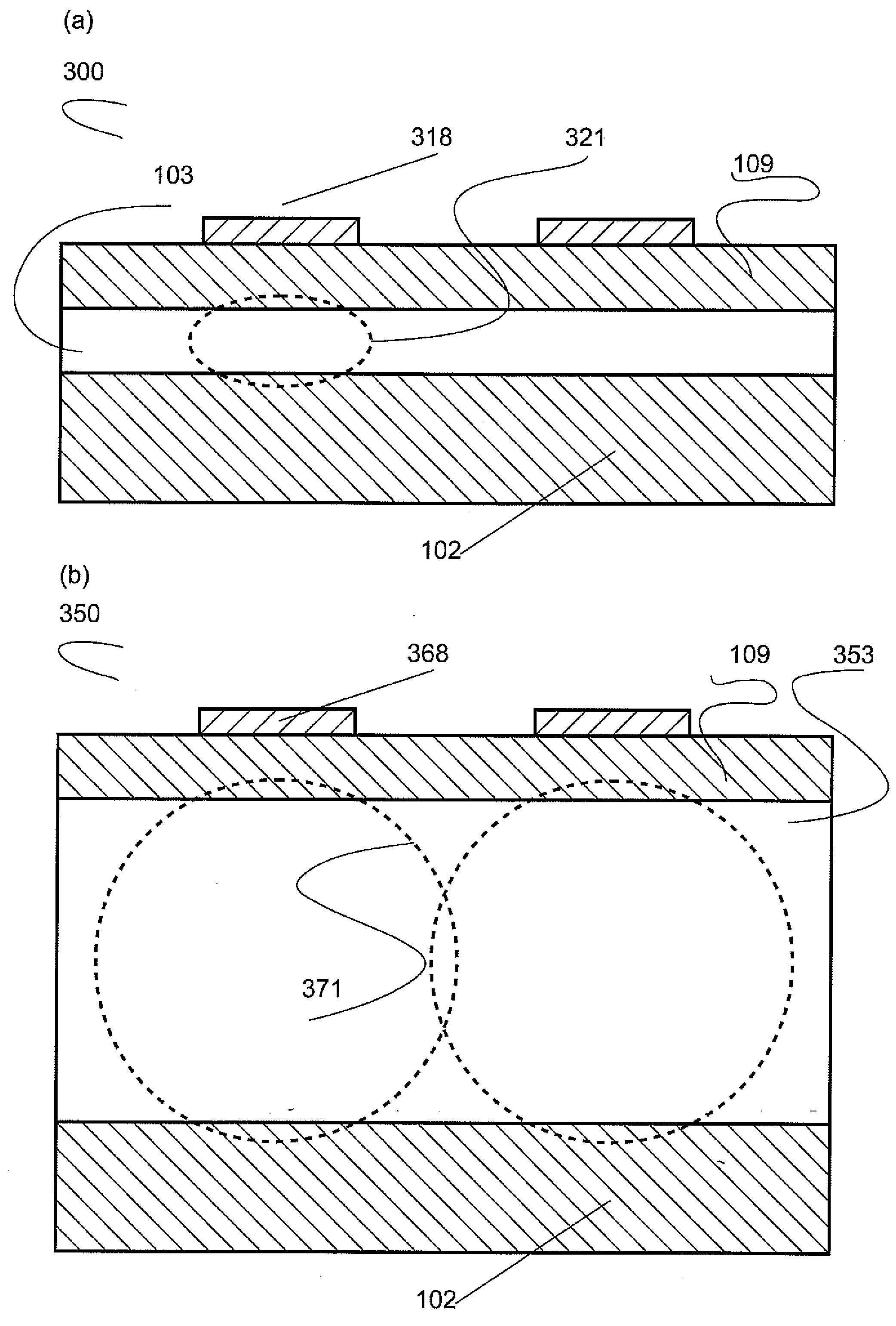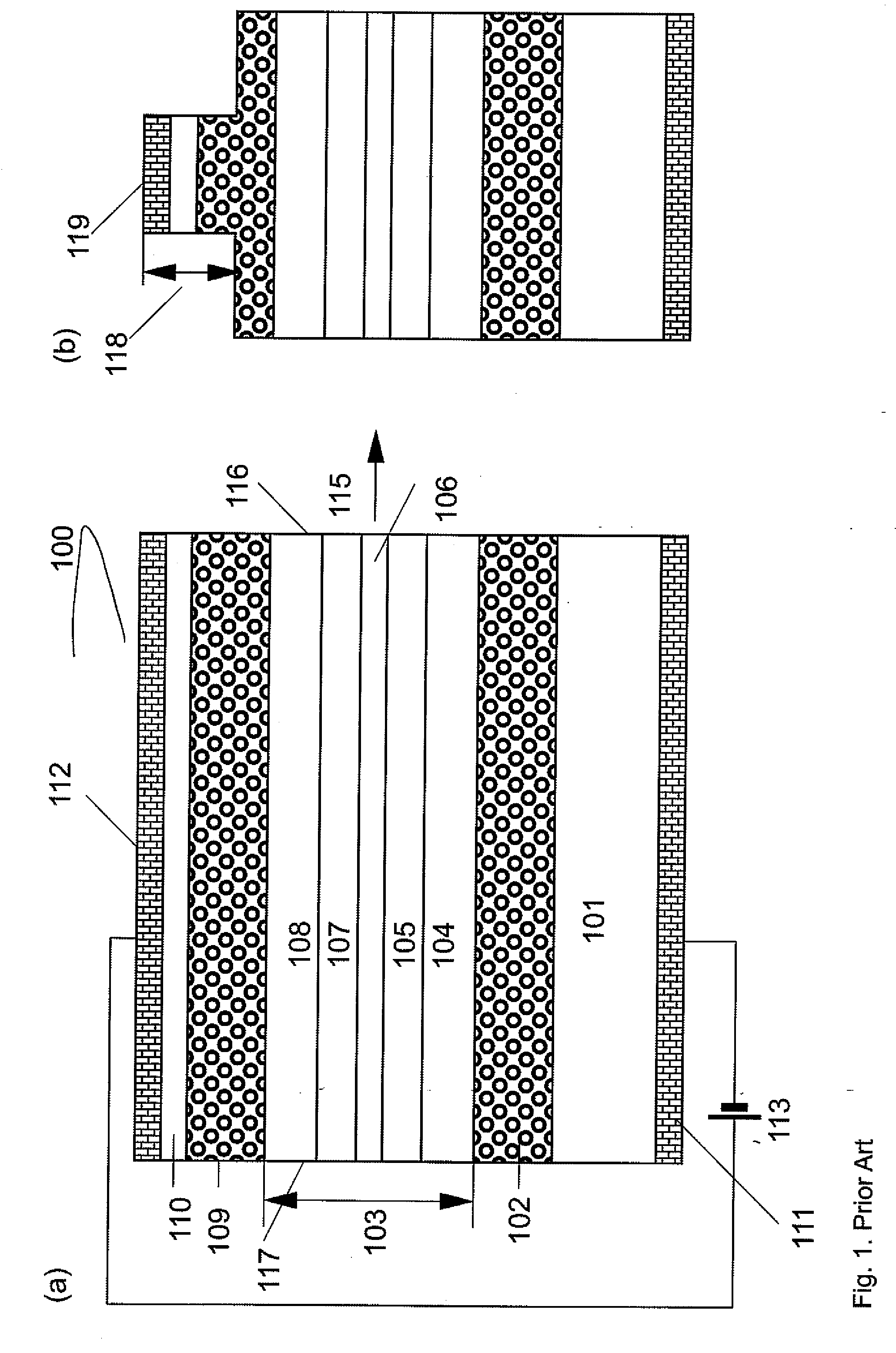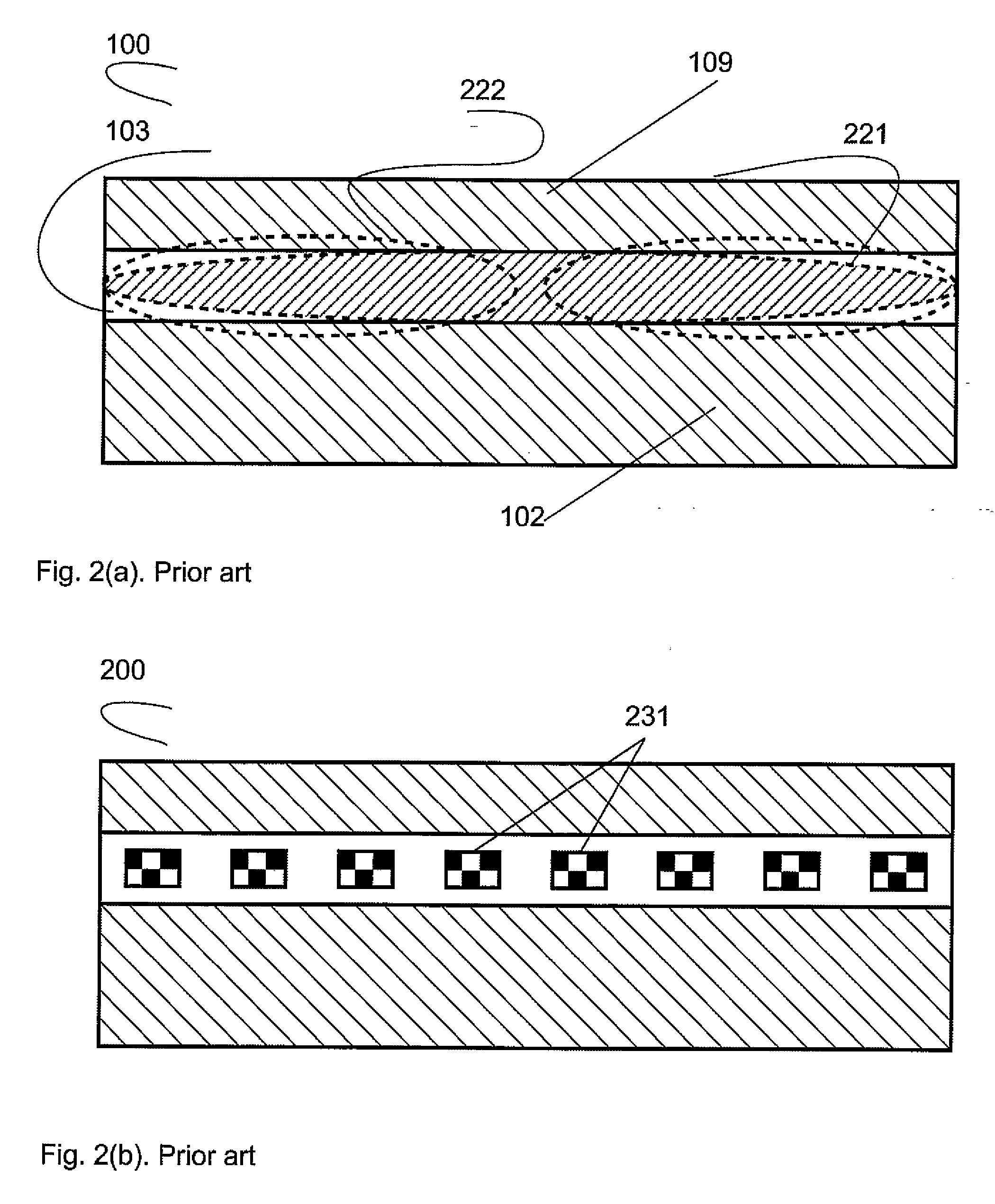Optoelectronic systems providing high-power high-brightness laser light based on field coupled arrays, bars and stacks of semicondutor diode lasers
a laser light and semiconductor diode technology, applied in the direction of laser details, laser optical resonator construction, optical resonator shape and construction, etc., can solve the problems of limited output power, severe limitations of conventional prior art edge-emitting lasers, and limitations of optical power density of all technological improvements including facet passivation, zinc diffusion, or proton bombardmen
- Summary
- Abstract
- Description
- Claims
- Application Information
AI Technical Summary
Benefits of technology
Problems solved by technology
Method used
Image
Examples
Embodiment Construction
[0089]FIG. 3(b) shows a different situation as compared to FIG. 3(a). The laser (350) contains a waveguide (353) which is broad in the vertical direction. This means that the waveguide is preferably broader than three times the wavelength of the generated laser light in the vacuum. Let, for example, the waveguide have a width of 10 micrometers. This can be comparable with the lateral distance between the centers of neighboring ridges (368). In this case, the profile of the optical field generated underneath each ridge has a shape close to the round shape (371), and optical fields generated underneath neighboring ridges, can overlap. Then, a coherent lateral optical field can be created across the laser.
[0090]A serious obstacle which typically hinders using a broad vertical waveguide is connected with the fact that the lasing from a broad waveguide is usually multi-mode. Special new concepts have to be implemented in order to ensure a single vertical mode lasing from a broad vertical...
PUM
 Login to View More
Login to View More Abstract
Description
Claims
Application Information
 Login to View More
Login to View More - R&D
- Intellectual Property
- Life Sciences
- Materials
- Tech Scout
- Unparalleled Data Quality
- Higher Quality Content
- 60% Fewer Hallucinations
Browse by: Latest US Patents, China's latest patents, Technical Efficacy Thesaurus, Application Domain, Technology Topic, Popular Technical Reports.
© 2025 PatSnap. All rights reserved.Legal|Privacy policy|Modern Slavery Act Transparency Statement|Sitemap|About US| Contact US: help@patsnap.com



